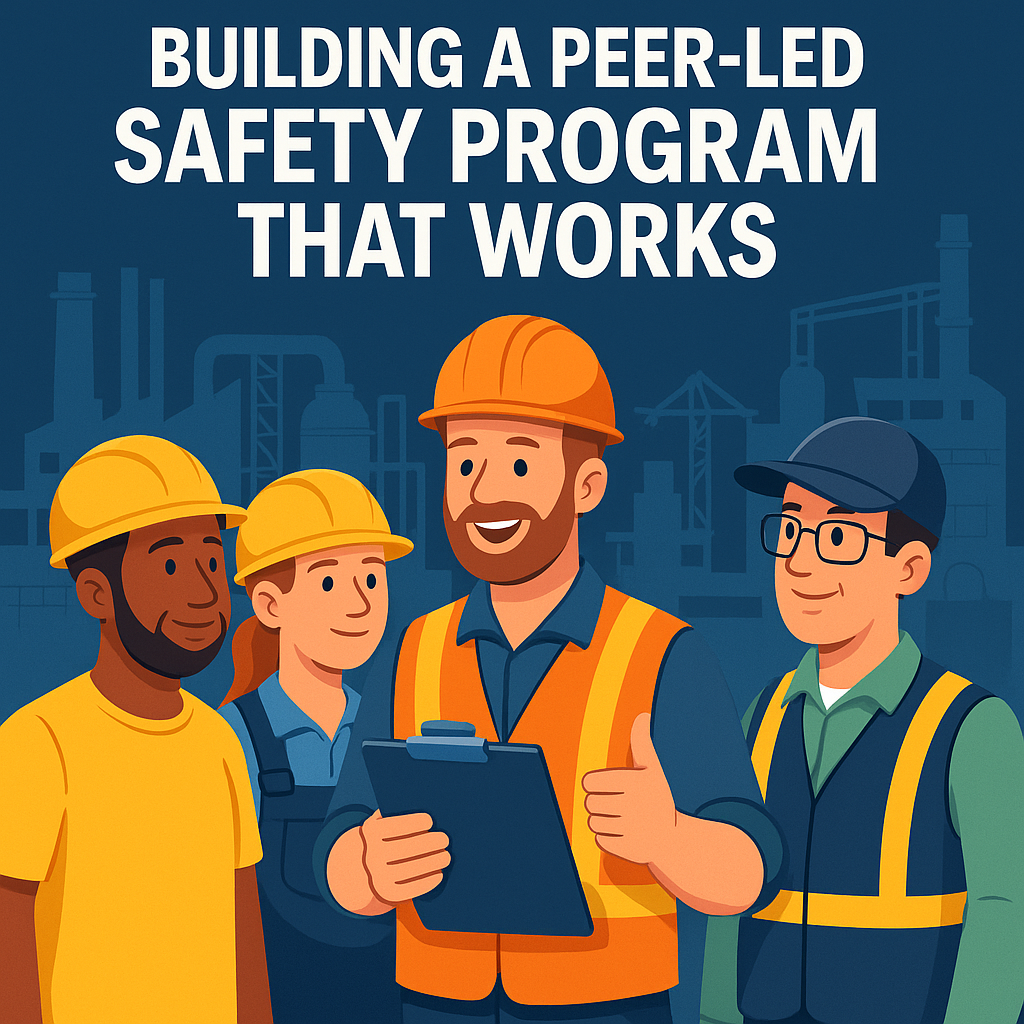What Is a Peer-Led Safety Program?
A Peer-Led Safety Program is a safety management strategy that empowers frontline workers to take an active role in promoting and enforcing health and safety practices.
Rather than safety being driven solely by management or OHSE professionals, it leverages the influence, experience, and trust of employees themselves.

These programs work because people tend to listen to and learn from their peers more readily than from supervisors. When safety becomes everyone’s job—not just the safety officer’s—the entire culture shifts toward proactive prevention.
Why Peer-Led Safety Programs Work
✅ 1. Boosts Trust and Communication
Workers are more likely to report hazards, near-misses, or unsafe behaviors to a peer than to management. This removes barriers to transparency.
✅ 2. Increases Engagement
When employees feel ownership of safety initiatives, participation skyrockets. It becomes their program, not just a corporate mandate.
✅ 3. Enhances Safety Culture
Peer leaders reinforce safe behaviors daily, making safety visible and consistent across the workforce.
✅ 4. Provides Real-World Insight
Frontline workers know the actual challenges and shortcuts that happen on the floor. Their input results in more relevant and practical solutions.
Steps to Building a Peer-Led Safety Program That Works
🧱 Step 1: Get Leadership Buy-In
For peer-led safety programs to succeed, leadership must fully support the initiative. This includes:
- Allocating time for peer leaders to meet and train
- Providing funding for materials and events
- Encouraging managers to step back and empower workers
Leadership’s role shifts from directing safety to enabling safety.
🙋 Step 2: Select the Right Peer Leaders
Choose employees who are:
- Respected by their peers
- Reliable and safety-conscious
- Strong communicators
- Willing to lead and be coached
Include workers from different shifts, departments, and language groups to ensure diversity and relevance.
🧠 Step 3: Provide Training and Tools
Equip peer leaders with:
- Safety fundamentals (hazard recognition, root cause analysis)
- Communication and feedback skills
- Incident reporting and investigation training
- Understanding of company policies and legal OHSE responsibilities
Use resources like OHSE.ca for training modules and printable toolkits.
📋 Step 4: Define Clear Roles and Structure
Peer leaders should not become “mini-managers.” Instead, define their role as:
- Leading toolbox talks or micro-training sessions
- Assisting with safety inspections or audits
- Mentoring new employees on safe practices
- Reporting trends and suggestions to safety committees
Keep responsibilities clear and non-disciplinary.
📊 Step 5: Monitor, Measure, and Adapt
Track KPIs such as:
- Number of hazards reported by peer leaders
- Participation in peer-led training sessions
- Incident trends in departments with peer leaders
Use feedback to refine the program and recognize top-performing teams.
Common Mistakes to Avoid

- Not giving peer leaders enough time: If they can’t step away from tasks, the role becomes symbolic.
- Selecting only senior workers: Newer employees may be just as effective—especially in fast-paced environments.
- Lack of accountability: Regular check-ins are essential to keep the program active and effective.
- Over-reliance on one or two champions: Build a team, not a single hero.
Success Story: Peer-Led Safety in Manufacturing
A mid-size plastics plant in Ontario launched a peer-led safety program with 12 team members across three shifts. In one year:
- Near-miss reports tripled
- First-aid cases dropped by 41%
- Employee satisfaction scores (safety culture) rose from 67% to 89%
The program succeeded because it was built from the ground up, supported by leadership, and adjusted quarterly based on peer feedback.
Tools to Support Peer-Led Safety Programs
- Digital safety reporting platforms (e.g., iAuditor, SafetyCulture)
- Custom badges or PPE markings to identify peer leaders
- Monthly leader forums or virtual check-ins
- Recognition programs for active participation
Safety From the Inside Out
A Peer-Led Safety Program works because it moves safety from enforcement to ownership. When workers lead the charge, they don’t just follow safety rules—they believe in them.
This model builds stronger teams, safer behaviors, and a culture that doesn’t depend solely on policies—but on people looking out for each other.


No comments yet